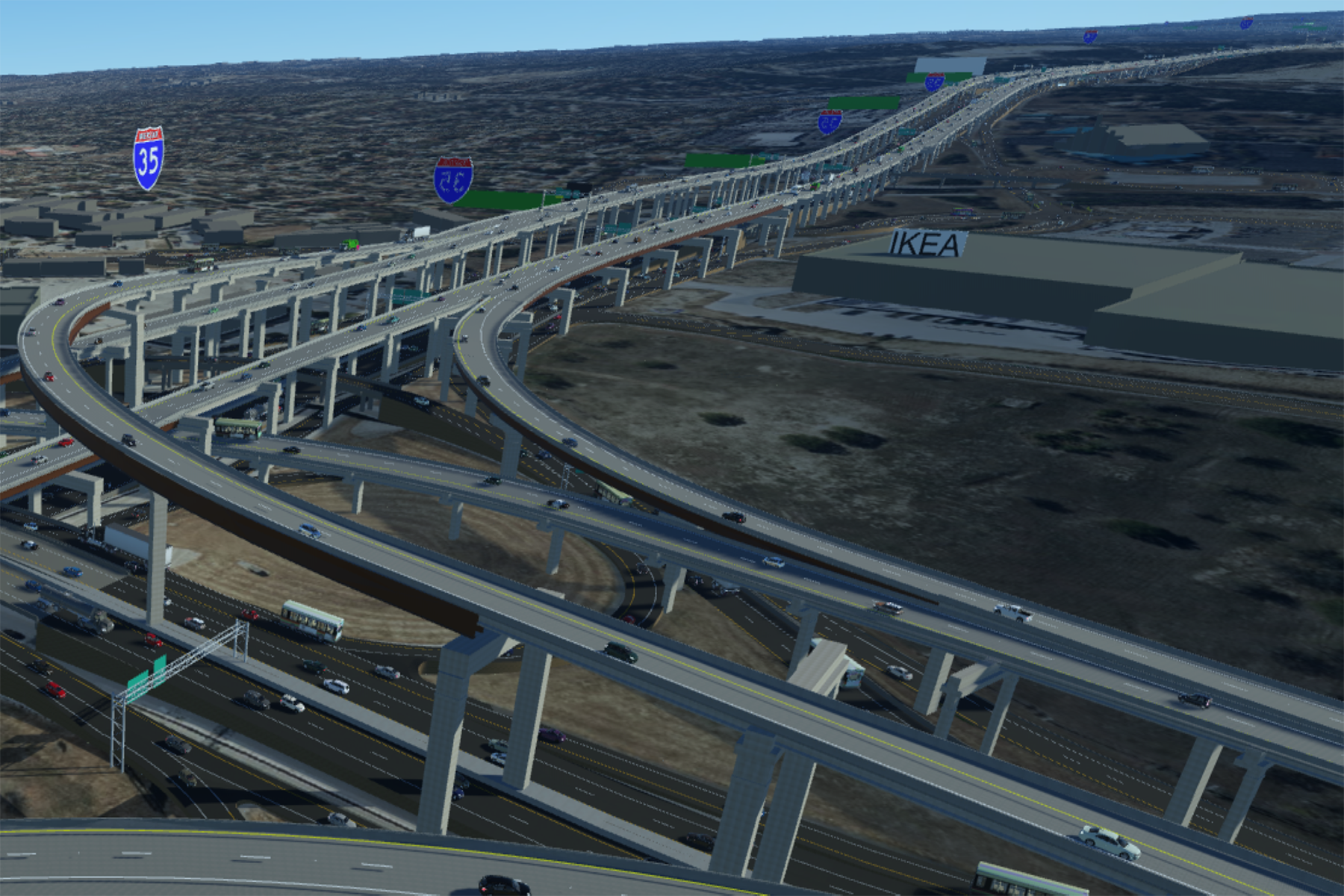The I-35 NEX Central project consists of construction of approximately 9.5 miles of elevated, non-tolled lanes from I-410 N to FM 3009. The elevated lanes will provide one high occupancy vehicle (HOV) lane and two general purpose lanes in each direction. The I-35 elevated lanes will provide direct connections to I-410 North and Loop 1604 West. The project also includes incidental construction necessary to transition the elevated lanes and connectors with the existing highways including revisions to ramps and frontage roads and accommodations for drainage, utilities, signs, and other highway improvements.
The majority of construction will occur on weeknights to avoid traffic disruptions.
Stay connected and informed by following us on Twitter and Facebook @i35nexcentral. You can also call 726-800-4809 or email us at i35nexcentral@txdot.gov.
The I-35 NEX project was broken into manageable break-out project sections – Central, South, and North. The Central project limits begin at I-410 N and extend north to FM 3009, approximately 9.5 miles.
"Traditional build" and "design-build" are two different methods of approaching construction on a large project such as I-35 NEX Central. With a traditional build, architects and engineers are employed to design the project. Once the design is complete, a construction company will use that design to construct the project. In comparison, a design-build project utilizes one company to both design and build the project, which has several benefits, including streamlined processes, reduced costs, and agility to adapt to design obstacles.
This project is being completed through a partnership between TxDOT, and Alamo NEX Construction, a joint venture between Ferrovial Construction and Webber. This project was identified by the Texas Clear Lanes Initiative.
An HOV lane is a special lane reserved for carpools, buses, motorcycles, or emergency response vehicles. These lanes enable vehicles to bypass the traffic in the adjacent, unrestricted mainlanes. HOV lanes reduce congestion, promote mass transit services, improve road safety, and establish corridor reliability.
